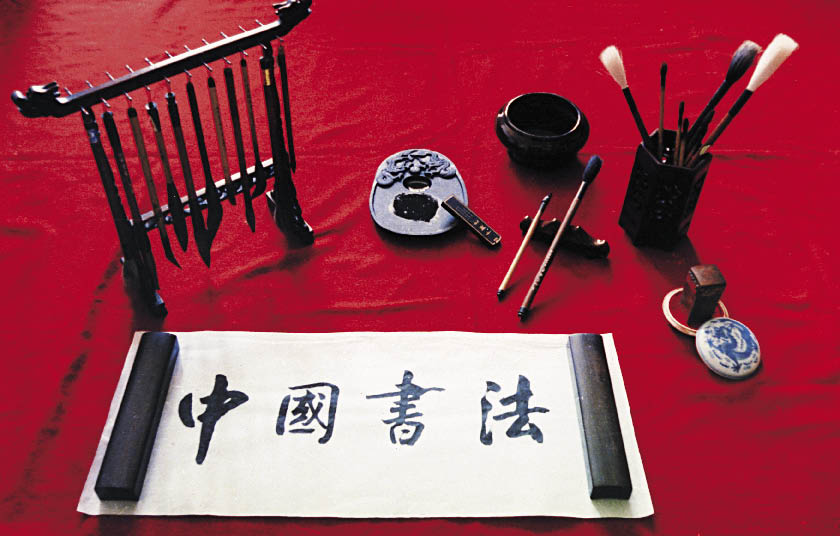The Fourth Treasure
By staff reporter XING WEN

THE grand opening ceremony of the Beijing Olympic Games in 2008 was unforgettable. On the center stage, elements unique to China rolled past us on a vast scroll. Projections of cliff paintings dissolved into an ink-and-wash painting as a performance troupe (dressed in black, to represent ink on paper) moved across the pale paper. It was a clever way for the director to represent ancient Chinese culture to people all over the world. While the Chinese elements may be commonly known, it is unlikely foreign audiences are aware of the name of the paper itself. Scrolls for traditional Chinese painting are drawn on Xuan paper.
Xuan paper, along with ink, brush and inkstone are known as the Four Treasures of Study. Throughout the ages, Xuan paper has been widely used in calligraphy, painting and book printing. It has a reputation for lasting more than 1,000 years. Most ancient Chinese books and paintings by famous masters are well served by Xuan paper, preserved intact into modern times.
Paper was invented by Cai Lun in the Eastern Han (25-220 AD) Dynasty. It is said that one of Cai Lun’s disciples, Kong Dan, was eager to invent a new kind of paper that would take a very long time to deteriorate. He failed many times until one day he happened to see the limbs of an old wingceltis. The wood had become rotten and turned white from being soaked in water. He added these kinds of limbs to his papermaking concoction, finally producing a paper that is resistant to corrosion.
It is widely believed that Xuan paper first saw the light in China’s Anhui Province. The earliest documentation of papermaking in the region was found in the tribute list to a Tang Dynasty (618-907) emperor, as well as in the local chronicles of that time. By the Song Dynasty (960-1279), the papermaking industry in the cities of Xuancheng, Huizhou and Taiping were gradually transferred to Jing County, where shipments of the paper radiated out to other ports. Xuanzhou (Xuan Prefecture), under whose jurisdiction Jingxian County was, gave the paper its name.
The relationship between Anhui Province and a thriving Xuan paper industry is close; the region provides the favorable natural conditions essential to the product. The unique water quality here and a mild climate are two key factors in papermaking. Of course the area is also rich in bamboo and wingceltis, which are the main ingredients for the rare and robust Xuan paper. The wingceltis tree is peculiar to China and grows in its mountainous areas. Its thin and long fibers are strong as well, making paper of superior quality and endurance.
For people of ancient times, choosing the essential blend of material was a process of trial and error. Papermakers in the Tang Dynasty found that using wingceltis and rice would make paper of the purest white. In the Song Dynasty, several new materials such as bamboo and mulberry were added to improve the paper’s quality. However, to preserve natural resources, present day papermakers replace some of the materials with straw, which is easier to find while leaving the paper’s superb quality uncompromised.
| 
